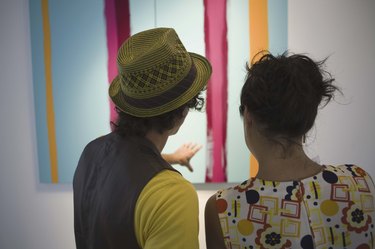
The difference between modern and traditional painting is almost a night and day contrast. This is in large part due to the success of the convention-breaking Impressionists, who in the mid-19th century started a trend by pushing the boundaries of what was considered to be acceptable art. The Impressionists changed the face of art and painting forever, and now modern painting is an unrecognizable beast compared to its predecessor, the traditional painting.
Defintion of Traditional and Modern
Video of the Day
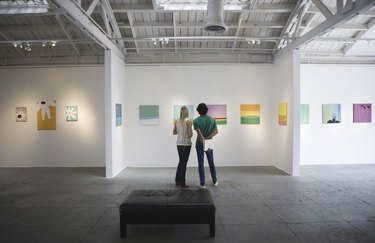
There is no official definition of "traditional" art paintings. However, the term "modern" art generally refers to any art created from approximately 1860 through the mid-20th century. That said, if one were to compare "modern" art paintings to "traditional" art paintings, one might say that a "traditional" art painting would be a painting in a style similar to paintings produced before 1860 (approximately), while a "modern" art painting would be a painting in the style of paintings produced after 1860.
Video of the Day
Traditional Paintings
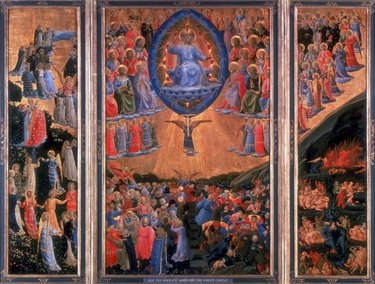
Traditional painting styles placed an emphasis on realism. Paintings long ago were most commonly used for portraiture and illustration of religious iconography. Canvases were used as vehicles for depicting three-dimensional spaces. Traditional paintings were often meant to be decorative, but they served another function: they were a major means for humans to document important figures and illustrate important stories. Before the invention of the camera, paintings were the only media that could convey information on a two-dimensional plane without the use of words and text. For this reason, the most successful artists tended to be those artists who could most convincingly capture their subjects with paint. It was important that the paintings looked real, or at least, realistic. Deviations from real life tended to be subtle compared to modern art paintings, and they were often used for the beautification of the final product.
Modern Paintings
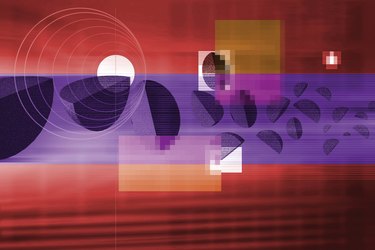
Modern art paintings are really most easily described as art that tries to be everything that traditional paintings are not. Where traditional paintings are confined to the boundaries of a relatively limited subject matter and limited painting styles, modern art is not confined to anything at all. Modern paintings can be about anything the artist wants and they may be painted in any style the artist wishes. The modern art veil can be said to encompass many smaller movements like Abstract Expressionism, Cubism, Pop Art, Surrealism and Impressionism, but it is most important to know that modern art can be just about anything. It could be said that the only rule in modern art is that there aren't rules.
Examples

Traditional art was usually influenced by two things: religion and the wealthy. Long ago, only people and organizations with money could commission paintings, and the wealthiest of all organizations in the Western world for many hundreds of years was the Catholic Church. Excellent examples of traditional art include "The Last Supper" by Leonardo Da Vinci and "The Arnolfini Painting" by Jan van Eyck.
A few famous examples of modern art include the Cubist work "Guernica" by Pablo Picasso, "The Persistence of Memory" (melting clocks) by Salvador Dali, and the drip paintings by Jackson Pollock.
Media
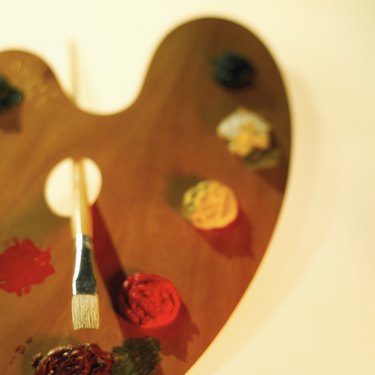
Very, very old traditional art was often painted in egg-tempera. Around the time of the Italian Renaissance, oil painting became the preferred medium for artists. Oil paints were preferred because of their slow drying time, making color blending and realism an easier achievement.
Modern painters still use oil paint quite a bit, but acrylic paint has taken its place on art canvases everywhere. Oil paint and acrylic paint look very similar when dry, but they tend to produce different results because of their drying time. Painters with acrylics may struggle to blend their paint, and this tends to change the finished product.
Decorative Purposes
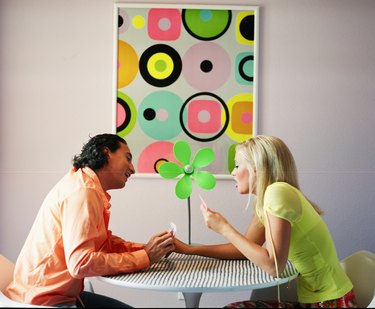
A lot of art in the modern style tends to fit nicely in public spaces, homes, hotels and offices. This type of art can be purchased online on websites dedicated to hand-made goods and also on large retail sites that specialize in home decor. Type "modern art paintings" into your search engine and see what you come up with.
Still, traditionally painted paintings have their place, especially in homes where the decor is conservative and in scholarly spaces like museums and libraries.
When picking art for your walls, take into consideration your color scheme and also your decorating tastes; if you have bookshelves lining your walls and traditional furniture styles, you're probably better off with a traditional-style painting.